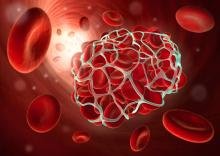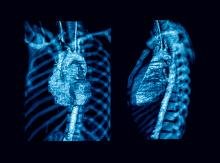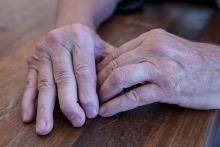Photo 1 . William Osler
William Osler was born on July 12, 1849 in Bond Head (Canada), now Ontario; the son of an Anglican clergyman, he studied at McGill University in Montreal, where he obtained his Doctor of Medicine degree in 1872.
His training was comprehensive and global since he then pursued postgraduate studies in Europe for two years; at the University of London, where he studied physiology between 1872 and 1873, continued in Berlin, where he met Rudolf Virchow, and then in Vienna, which were the most developed cities in terms of medicine. In addition he devoted himself to the study of histology, physiology, pathology and in the knowledge of hospital clinic. (1)
Upon his return to Canada, he worked as a pathologist and thus began to develop his facet as a researcher, combining clinical and pathology. His style was to study diseases at the bedside, as suggested by the Leyden school, since the 17th century.
He had the opportunity to practice in his native Canada but also to train at the Johns Hopkins School of Medicine in the United States and to work at Oxford University in England, which helps to explain, among other things, his remarkable influence as a forger of modern Western medicine.
He was an outstanding teacher and took up teaching at McGill University, at the age of 26, as a pathologist at the Montreal General Hospital. At that time he learned the Zadig method from Sir Arthur Conan Doyle (the creator of Sherlock Holmes). This method was taken from Zadig of Destiny, a novel written in 1747 by Voltaire and which was a much celebrated work in the age of enlightenment. The novel tells the adventures of a philosopher (Zadig) in ancient Babylon and is based on the Persian tale “The Three Princesses of Serendipity” which presents human life controlled by what is considered destiny, beyond one’s own control.
Voltaire’s work was highly recognized and influenced different characters such as Auguste Dupin created by Edgar Allan Poe and Sherlock Holmes, the paradigm of deductive analysis created by the physician and writer Arthur Conan Doyle. Zadig had an interest in nature and details, which Osler applies in the descriptions of clinical histories, to make diagnoses (2).
In 1884 he went to Philadelphia, at the University of Pennsylvania, and in 1888 he was appointed head of the chair of Clinical Medicine and of the clinical department of Johns Hopkins Hospital. By 1890, Osler at age 41 was the foremost clinician in the United States and was appointed chief medical professor at Johns Hopkins Hospital in Baltimore.
It has also been told that he, on a personal note, had an uncontrollable urge to play practical jokes that constantly got him into trouble. Two years before coming to Hopkins, the same institution recalls, he had tricked a respected medical journal into printing a bogus, outlandish article, and after that, the journal’s editor refused to publish Osler or take his work seriously (3).
But it’s better to remember the life of this iconic doctor (Photo 1) through a new Interview with history:
About you it is said that there was a transformation... What was that like?
Yes, perhaps we could say that. Let’s start by remembering that in 1893, at age 44, I inaugurated the Johns Hopkins School of Medicine as a clinician and professor -so some now call me a great leader- along with other great medical personalities such as William Henry Welch (pathologist); William Halsted (surgeon); and Howard Kelly (gynecologist). We were called “The Big 4 of Johns Hopkins Hospital” (3).
The medical teaching curriculum we initiated in Baltimore was an example to the world, teaching medicine to students at the bedside of the sick. (Photo 2)
We must consider that I lived in one of the golden ages of medicine with such important discoveries as the x-rays in 1895, the electrocardiogram in 1908, the determination of the etiology of some infectious diseases such as tuberculosis in 1882, syphilis in 1905, and the introduction of aspirin as a drug to treat rheumatic fever in 1895; anti-diphtheria serum in 1889 and salvarsan to treat syphilis in 1909 and the development of diagnostic techniques for the exploration of the heart, respiratory system, digestive system, central nervous system, locomotor system, endocrine system, metabolism, infections, blood, biochemistry, radiology and the great medical texts. We could say that it was the beginning of modern medicine. That was my era.
I felt a great admiration for Hippocrates and Sydenham (4), that is why I insisted on teaching at the patient’s side and getting, information through scientific journals. I was critical of the lack of publications of the experience of North American physicians; I criticized polypharmacy, despite the lack of drugs at that time; but I was always insistent on the importance of knowledge of semiology and clinical examination techniques and corroborating the mistakes through autopsy. (1-3).
And your link with Rheumatology?
Through careful observation of patients and correlation with the autopsies performed, I made contributions to diseases that today are part of the field of Rheumatology (5,6,7).
- Lupus Erythematosus: In 1895 I described a disease of “unknown etiology with polymorphic skin lesions, occasionally arthritis and a variable number of visceral manifestations” “which I named erythema exudativum multiforme, thus being the first to report systemic manifestations without skin changes (7). I took the credit in 1904 for the description of the clinical and anatomopathological components of systemic lupus erythematosus (SLE) that I had been studying in autopsy series since 1885. I demonstrated that there were systemic lesions that started from characteristic vascular lesions, leading to the involvement of various organs, which I named vasculitis. A great number of infectious diseases studied and described by me, presented with arthralgia and true arthritis, which from the symptomatic point of view, constitute differential diagnoses for Rheumatology (5,6).
- Vasculitis of Churg Strauss: In 1900 in lecture at the Johns Hopkins Hospital Medical Society, I described a disease characterized by asthma with cyanosis, purpuric lesions, arthralgias, myalgias and eosinophilia. Subsequently, this is what became known as Churg-Strauss Syndrome (5).
- Rheumatic fever: In my time, carditis due to rheumatic fever already had a high incidence, between 58 to 72%. I reported that infectious diseases such as salmonellosis, meningitis, meningococcal infection and gonorrhea are of the septic type, unlike rheumatic fever, which is of the reactive type, an extraordinary concept for the time. I used salicylates to treat the joint pains of rheumatic fever.(5)
I have some other descriptions of what today is part of the specialty of rheumatology (7)
- Osler-Libman-Sacks disease or warty endocarditis in systemic lupus erythematosus.
- I described the visceral complications of systemic lupus erythematosus.
- I described the nodular form of pretibial myxedema.
Of course internists and several subspecialists also hold me in high esteem and there are several syndromes, maneuvers, phenomena and signs described under my name (1-3 ):
- Rendu-Osler-Weber-Dynamic disease: a combination of hereditary hemorrhagic telangiectasias associated with vascular malformations in the skin and mucous membranes, in addition to pulmonary pistols.
- Osler’s syndrome is the association of cramping pain with typical irradiation to the back, associated with jaundice, chills and fever, caused by lithiasis in the ampulla of Vater and inferior vena cava syndrome.
- Osler-Vaquez Syndrome: in describing polycythemia rubra vera
- Osler maneuver: used in cases of pseudo-hypertension in those cases with atherosclerosis and when using the sphygmomanometer, the systolic pressure is found artificially high, caused by the calcifications of the arterial wall.
- Osler’s phenomenon: it is the agglutination and platelet aggregation that I observed during my internship in London.
- Osler’s sign: it is the name given to the ocher pigmentation in the sclera of patients with ochronosis or alkaptonuria.
- Hessel-Osler triad: the association of pneumonia, endocarditis and meningitis associated with pneumococcus.
- Osler-Libman-Sacks disease or warty endocarditis in systemic lupus erythematosus.
- Jaccoud-Osler-Linman disease or bacterial endocarditis.
- I described the nodular disease of pretibial myxedema.
- I described Osler’s nodules in endocarditis.
What about your arrival at Johns Hopkins?
There are several theories. One says that Billings, the hospital planner, is generally credited with hiring me, but according to Simon Flexner, a biographer of the Welch colleague, I was actually a second choice.
When Welch argued the case for me, Billings reluctantly agreed, believing that I was too interested in pathology, a field Welch had covered well.
It was then that Billings made a stop between trains in Philadelphia and came to my apartment to ask me to take over the medical department of Johns Hopkins Hospital and I said yes without hesitation. This brief job interview, they now say, changed the course of American medicine.(3)
If you could tell me four key elements of your legacy, what would they be?
I could mention first of all teaching at the patient’s side; the second would be the new curriculum, medical education and the promotion of research in students; the third would be the knowledge of history and humanism and, finally, the love for internal medicine.
Perhaps my greatest contribution was the establishment of the medical residency program, now the norm in most training hospitals. Through this system, physicians in training make up a large part of a hospital’s medical staff.
I am proud to know that the word Aequanimitas stamped on the coat of arms of the Hopkins Department of Medicine is written in honor of my essay of the same name (8). (Photo 3)
I considered the term imperturbability as the main quality of a good doctor: to have coolness and presence of mind in all circumstances, calmness in the midst of the storm, clarity of judgment in times of grave danger. In full development, it has the nature of a divine gift, a blessing to the possessor, a comfort to all who come in contact with it.
Photo 2 Johns Hopkins Hospital and first “litter” of interns in William Osler’s time.
At the beginning of their residency, all Johns Hopkins interns now receive a copy of this essay, both to bolster their spirits and to refresh their memories during the following year’s tests.
What about publications?
I am estimated to have between 1300 to 1500 publications, impressive even for today’s times but I particularly believe that the greatest legacy was writing “The Principles and Practice of Medicine”, published in 1892, which was an immediate success among English-speaking physicians, the first edition selling out quickly (26,000 copies). I revised and wrote the first seven editions until 1909. The book was translated into French, Russian, German, Chinese and Spanish. My students continued to publish new editions until 1947.
I liked history and philosophy. I wrote some essays on the history of medicine, such as “The Evolution of Modern Medicine”; “The First Printed Medical Books’”; “Medicine in Magna England”; “The Young Laënnec”; “The Evolution of Internal Medicine”; “The Growth of Truth”; “The Old Humanities”; “The New Science”; and “Michael Servetus.” (1-3)
That also led you to be a huge collector....
I collected books on the history of medicine; and now that compilation of over seven thousand volumes is the main part of the library of the history of medicine at McGill University, known as the Oslerian Library, founded in 1929. (1-4).
Who were your mentors?
I consider William A. Jonson, pastor of Weston Ontario, James Bovell of the Toronto School of Medicine and Robert Palmer Howard, dean and professor of medicine at McGill University, Montreal.
One of the books that Rev. Johnson recommended was “Religio Medici”, written in 1642 by Sir Thomas Browne a mixture of prose poem with a confession of faith and a “private journal of the soul”. I like it because it explores religious thought, but it cannot be described as theological and, although it was written by a physician, it is neither medical nor scientific; in fact, Browne explored the central themes of faith and charity, but recognized the need to keep religion separate from science because “many things are true in divinity, which are neither inducible by reason nor confirmable by the senses.” (9)
That is why it was the first book I bought, besides this book was my friend and I always had it on my bedside table, and I quoted it frequently. Those who knew of my appreciation for this book often gave me different editions as gifts (10).
Your work was also criticized...
Some say that I had no original discoveries, that I did not invent any new diagnostic tests, did not introduce any important new therapies and, now, most of my clinical writings are largely outdated. Those are their arguments. (3)
At some point it was criticized that the textbook for which I am widely recognized focuses more on diagnostics than therapeutics because I stated in it that drugs were ineffective in 45 diseases and I frequently used words and phrases such as “unsatisfactory”, “futility of treatment”, “no measures have been found that can be endorsed” or “of little service” or frankly “useless” (11 ).
One of my lectures at Hopkins, just before leaving for England, “The Fixed Period”, was also much commented in the press. It generated all kinds of comments because according to the press I suggested that senior doctors should be anesthetized with chloroform “Osler recommends giving them chloroform at 60’s”, said the press to refer to the fact that I suggested that they should retire in time.
“Study until you are 25, research until you are 40, practice until you are 60, age at which I would retire with double pay”, they misunderstood my real message to the hospital physicians at that time about the awareness we should have about our life cycle as professionals and the need to be self-renewing or reinventing ourselves as they say now with the passing of time.(12)
However, it has been shown that the emphasis on learning how to learn together with patients, having a methodology to be able to make diagnoses and make appropriate use of therapies without recommending unproven treatments are universal lessons that are part of what we physicians are today.
You are also well known for your aphorisms...
Yes, it is true. I told you that I liked philosophy and reflecting on our work. Several of my best known aphorisms emphasized clinical and patient assessment and many are still valid today. I always sought encouragement of critical thinking and assessment within the profession (13, 14) and I think that is why I am quoted so often. They have also been called “Oslerisms” (15):
- On medical teaching: “I wish no other epitaph...than the statement that I taught medical students on the wards, as I consider this to be by far the most useful and important work I have been commissioned to perform.”
- Or about books and patient review: “Seeing sick people without reading books is like sailing the sea without charts but reading books without seeing sick people is like never sailing at all”.
- On taking the clinical history: “Taking the history follows the same line of thought, do not suggest answers. Write the patient’s complaint in the same words”.
- On physical examination: In addition to inspection, palpation, percussion, auscultation suggested contemplation of the patient” (Photo 4). “The whole art of medicine is in observation .... but educating the eye to see, the ear to hear and the finger to feel takes time, and getting started, setting a man on the right path, is all you can do.”
- On patients: “Every patient you sees is a lesson in much more than the disease from which he suffers.” (13, 14 )
What advice can you give to your colleagues?
We are in this profession by vocation, not by business; a vocation that constantly demands self-sacrifice, devotion, love and tenderness towards our fellow men. When you fall to a purely business level, your influence disappears and the true light of life is extinguished. They must work with a missionary spirit, with a breath of charity to overcome the petty envy of life.
Referencias
- Golden RL. William Osler at 150: an overview of a life. JAMA. 1999 15;282(23):2252-8. doi: 10.1001/jama.282.23.2252. PMID: 10605978.
- Belkin, B M. The Art of Observation: William Osler and the Method of Zadig. Annals of Internal Medicine 1992; 116(10): 863. doi:10.7326/0003-4819-116-10-863
- Johns Hopkins website : The Founding Physicians https://www.hopkinsmedicine.org/about/history/history-of-jhh/founding-physicians.html
- Iglesias: Thomas Syndenham. ¿El primer reumatólogo?. Global Rheumatology By Panlar 2020; Available at: DOI:https://doi.org/10.46856/grp.26.e030
- Balint G, Rooney PJ, Buchanan WW. A legacy for rheumatology from Sir William Osler. Clin Rheumatol. 1987; 6(3):423-35. DOI: 10.1007/BF02206844
- Serra-Valdes MA. Sir William Osler: el padre de la medicina moderna. Aportes a la reumatología. Rev Cuba Reumatol . 2015; 17, suppl.1: 162-168. Available at: <http://scielo.sld.cu/scielo.php?script=sci_arttext&pid=S1817-59962015000300014&lng=es&nrm=iso>.
- Felten R, Lipsker D, Sibilia J, Chasset F, Arnaud L. The history of lupus throughout the ages. J Am Acad Dermatol. 2020 May 4:S0190-9622(20)30772-6. doi: 10.1016/j.jaad.2020.04.150.
- Aequanimitas P. Blakiston’s & Co (1910)
- Carlin D. Sir Thomas Browne’s Religio medici and the publishing house of Ticknor & Fields. Osler Libr Newsl. 1998; (89):1-4. Available at https://www.mcgill.ca/library/files/library/Osnl89.pdf
- Hague-Yearl MKK. Osler Centenary Papers: Osler, inscribed. Postgrad Med J. 2019; 95(1130):637-641. doi: 10.1136/postgradmedj-2019-136745. PMID: 31754054.
- Hogan DB. Did Osler suffer from “paranoia antitherapeuticum baltimorensis”? A comparative content analysis of The Principles and Practice of Medicine and Harrison’s Principles of Internal Medicine, 11th edition. CMAJ. 1999 Oct 5;161(7):842-5.
- Bryan CS. Osler goes viral: “The Fixed Period” revisited. Proc (Bayl Univ Med Cent). 2018; 31(4):550-553. doi: 10.1080/08998280.2018.1493322
- Osler Aphorisms, From His Bedside Teachings And Writings https://archive.org/details/in.ernet.dli.2015.63933
- Leach H, Coleman JJ. Osler Centenary Papers: William Osler in medical education. Postgrad Med J. 2019; 95(1130):642-646. DOI: 10.1136/postgradmedj-2018-135890
- Oslerisms Available at https://litfl.com/eponymictionary/oslerisms/
Photos
- Photo 1 William Osler Retrato a Color . Available at Wikicommons. By The original uploader was YUL89YYZ at English Wikipedia. - Transferred from en.wikipedia to Commons. Transfer was stated to be made by User:YUL89YYZ., Public Domain, https://commons.wikimedia.org/w/index.php?curid=3240929
- Photo 2 Hospital Johns Hopkins and first “litter” of interns in Osler’s time .Source: https://wellcomeimages.org/indexplus/obf_images/ed/ef/ae672401f1141719924c25ee46ac.jpgGallery: https://wellcomeimages.org/indexplus/image/L0004896.htmlWellcome Collection gallery (2018-03-31): https://wellcomecollection.org/works/cv2w7up8 CC-BY-4.0, CC BY 4.0, https://commons.wikimedia.org/w/index.php?curid=35868096
- Foto 3 Carátula de Aequanimitas 1914 https://commons.wikimedia.org/wiki/File:Aequanimitas_cover.jpg#/media/File:Aequanimitas_cover.jpg
- Photo 4 Osler’s photos at a patient’s bedside By https://wellcomeimages.org/indexplus/obf_images/8d/15/9cddc535e09fa505ec521e28d3b9.jpgGallery: https://wellcomeimages.org/indexplus/image/L0004900.htmlWellcome Collection gallery (2018-04-06): https://wellcomecollection.org/works/wqbf2244 CC-BY-4.0, CC BY 4.0, https://commons.wikimedia.org/w/index.php?curid=35868103




























































